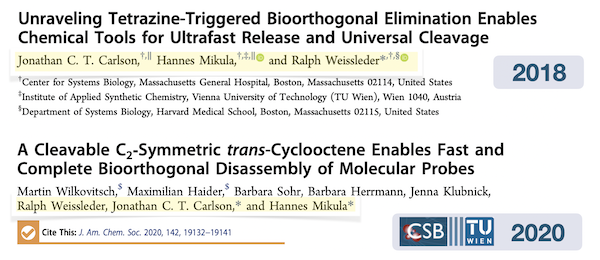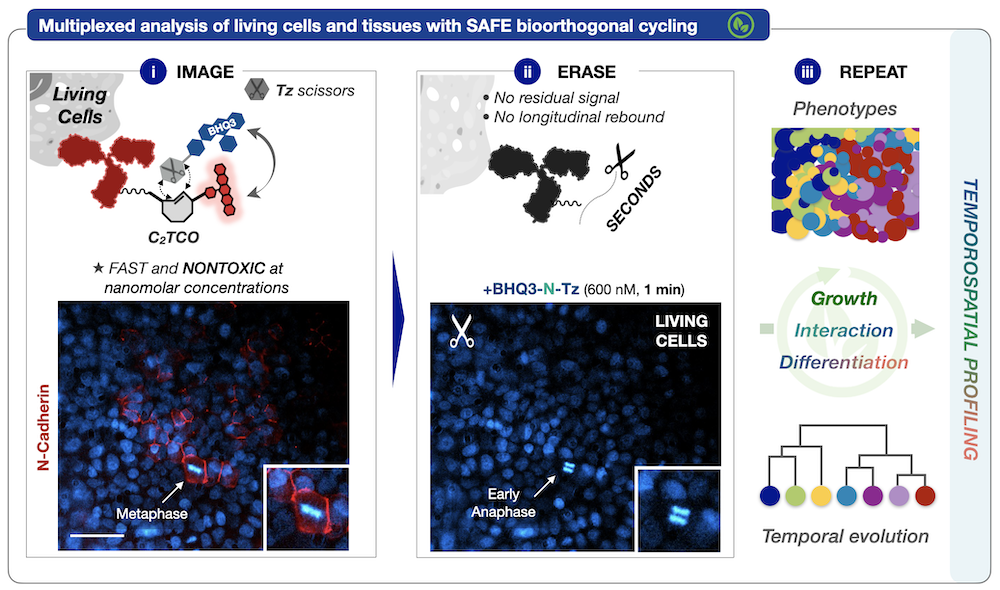Visualizing living cells & tissues in many colors with SAFE
The problem: key challenge for analytic biotechnologies has been to develop techniques that are able to synchronously visualize both biomolecular complexity and (multi)cellular dynamics in living systems.
The solution:
Bioorthogonal chemistries are built around chemical partners that remain functional and react selectively even in the complex biological milieu. Groundbreaking investigative work by the team of Jonathan Carlson, Hannes Mikula and Ralph Weissleder from 2014-2018 unraveled the mechanism of versatile tetrazine/trans- cyclooctene (Tz/TCO) “click to release” bioorthogonal elimination reactions.
cyclooctene (Tz/TCO) “click to release” bioorthogonal elimination reactions.
Leveraging these discoveries, the team invented the highly stable and uniquely efficient scissile linker C2TCO, with work published in 2020 describing a versatile toolkit for connecting and disconnecting biomolecules on demand. Taking advantage of molecular symmetry to ensure the desired outcome irrespective of how the reaction proceeds, the patented C2TCO scaffold achieves truly universal cleavage, enabling complete (>99%) disassembly in seconds.
With these inventions, we set out to re-tool serial immunostaining to make it compatible with living cells and tissues: fast, nontoxic, and high-performance. Scission-accelerated fluorophore exchange (SAFE) exploits non-covalent fluorophore quencher interactions to boost the intrinsic Tz/TCO reaction rate by more than 3,000-fold, enabling us to erase fluorescent signals (>99% clearance) from live antibody-labelled cells in seconds at nontoxic nanomolar concentrations. The chemical machinery of SAFE performs cleanly within living cells and tissues: SAFE-labelled antibodies can generate multiplexed profiles of living blood and bone marrow cells in micro-well suspensions or in adherent culture. Serial images recorded these living cells progressing through mitosis amidst the scission process and differentiating across six days, while confocal time-lapse imaging of living hepatic tissue captured cellular migration and spatial architecture in rich molecular detail. SAFE staining can readily defines cellular subsets within complex populations/architectures and over extended timeframes—creating the first method for multiplexed temporospatial profiling of living cells and tissues in their biological context.
